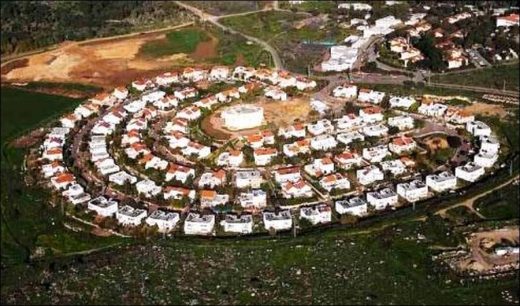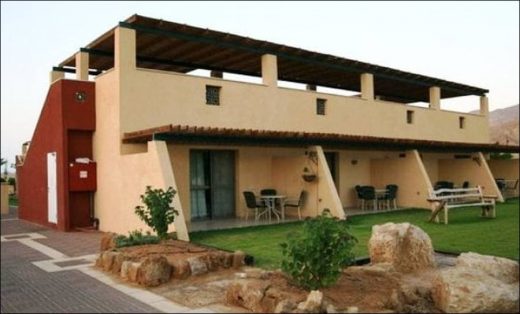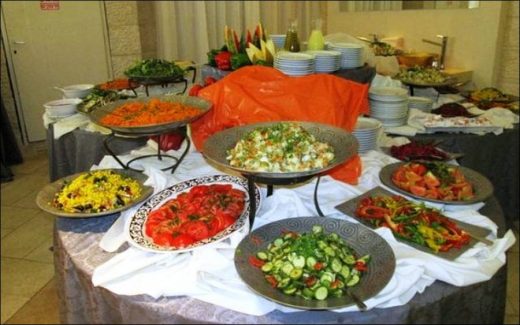Kibbutz (Hebrew: קיבוץ; meaning community) is the name given to communal settlements in Israel. The kibbutz system has an important place in the establishment of the state of Israel. The kibbutism society, which practically brings together socialism and Zionism with collective initiatives as utopia, is an Israeli experiment and one of the largest collective social movements in history. The plural of the word is Kibbutzim, and the member is called Kibbutznik. I also stayed in these common commune living spaces during my 1.5 month stay in Israel.
The kibbutz system developed at the beginning of the 19th century under the influence of philosophers such as Saint Simon, Proudhon, Robert Owen, and Martin Buber. The first Kibbutz was Degania, founded in 1909. The system, which traditionally started for agriculture, now includes industry and high-tech facilities. Today, there are about 270 communities with an average population of 1,000, making up 3% of Israel’s population.
These collective farms, which are shown as examples of communism by many socialist writers, are known as the places where the generation of statesmen who played a role in the establishment and development of Israel spent part of their lives. The vast majority of people living in the kibbutz system vote for leftist parties.
What Kibbutz means?
Founded for the first time by Jewish immigrants who came to the Middle East after the 1905 Russian Revolution, the kibbutz literally means “community”, but in practice it means collective farm. No private property; jointly produced products are shared on agricultural lands, which are the common property of the community; Kitchen, laundry, childcare are also shared.
Communities, which were the places where the first agricultural accumulation was realized during the establishment of Israel, also played a role in the establishment of the industry in the following period, and factories producing in various sectors were established. In recent years, privatizations have dominated under the name of restructuring. Kibbutzim are places where poor Jews who immigrated to Israel today are made to work in order not to become a burden to the state under the name of their adaptation to society.
Kibbutz Society
In production, kibbutism acts according to the principle of “everyone should help according to his ability”. In consumption, this principle is according to everyone’s needs. Basic needs are fulfilled in the form of services prepared through centralized structures. Members of the society share on an equal basis the house, clothing, food, old age and care required in the event of sickness. In addition, there are opportunities for the special needs of the members. The amount allocated for these needs varies depending on the kibbutz’s welfare and personal budgets.
Kibbutz Families
Kibbutz families do not carry economic responsibilities. Parents do not assume personal responsibilities regarding children. People in principle carry out the upbringing and education of children jointly. Most children live in kindergartens under the supervision of trained caregivers. As they get older, they grow up in developing groups and organize themselves according to democratic principles.
Primary education is provided in every community. For secondary schools, there are schools formed by a combination of several kibbutz. Children are subjected to 12 years of uninterrupted education until the age of 18.
Kibbutz Ramat Rachel
Ramat Rachel is a community within the municipal boundaries of the City of Jerusalem, under the control of the Mateh Yehuda District Council. Founded in 1921, the community has a population of approximately 400. I have mostly stayed here in more modest communal spaces during my travels to Israel. Those traveling in the country can stay for a fee.
The economy of the Kibutz Ramat Rachel community is based on agriculture, high technology and tourism. Founded in 2002, Data Detection Technologies provides counting and packaging solutions with advanced electrooptic technologies to the seed, pharmaceutical and diamond industries. Kibbutz families grow cherries, oranges, hairless peaches, grapefruits, olives, persimmons, figs and tangerines.
Hotel Mitzpeh Rachel is the only kibbutz hotel in Jerusalem and has views of the Palestinian city of Bethlehem, the Judean Desert, Herodion and Jerusalem. The 108-room hotel has a convention center, tennis court, wet and dry sauna, jacuzzi and a large swimming pool.
Sde Boker
Sde Boker is a Kibbutz communal space under the jurisdiction of the Ramat HaNegev Regional Council, located in the Najaf Desert in southern Israel. The most well-known feature is that the house where the country’s first prime minister, Ben Gurion, lived in retirement, is here. Its population is 426 people. Apart from this desert, there is also the Judean Desert in the country.
Sde Boker was founded on May 15, 1952, where I stayed during my trip to Israel. He settled here when Israeli Prime Minister Ben Gurion retired in 1953. He worked on the cultivation of the Negev Desert and the establishment of the towns of Yeruham and Dimona around it. Although he returned to politics in 1955, he lived here until 1973. They are buried side by side with his wife Paula Ben-Gurion in the nearby Midreshet Ben-Gurion.
Kibbutz Ginosar
Ginosar is a common living area located on the west coast of the Sea of Galilee. The settlement north of the city of Tiberias, close to the Golan Heights, is under the administration of the Emek HaYarden District Council. Its population is about 500 people. It is also not far from the cities of Nazareth and Haifa.
Ginosar was originally an agricultural society, today it also has tourism income. During the drought in 1986, it was determined by carbon testing between 100 BC and BC. A fishing boat dated to 70 BC was found. Today it is on display at the Beit Yigal Allon Museum.
Visits: 174





